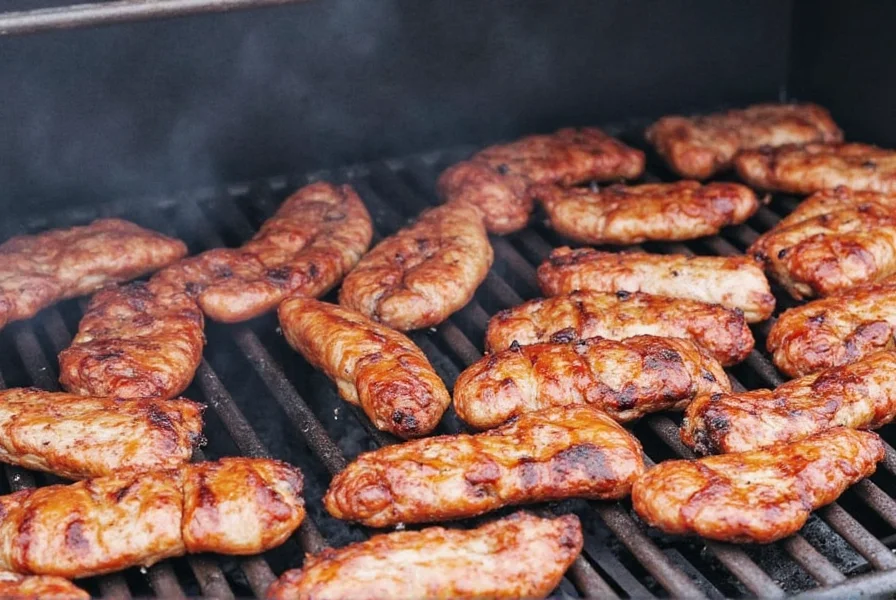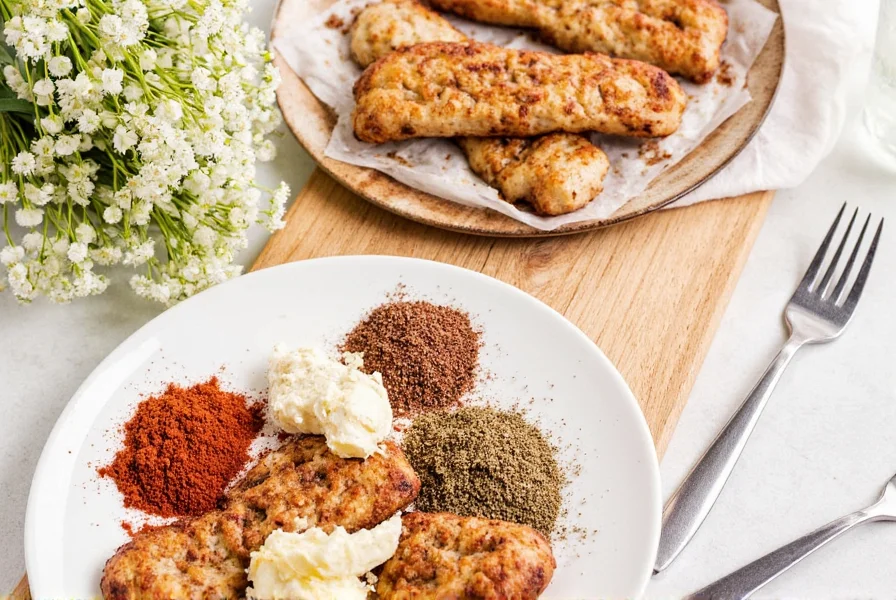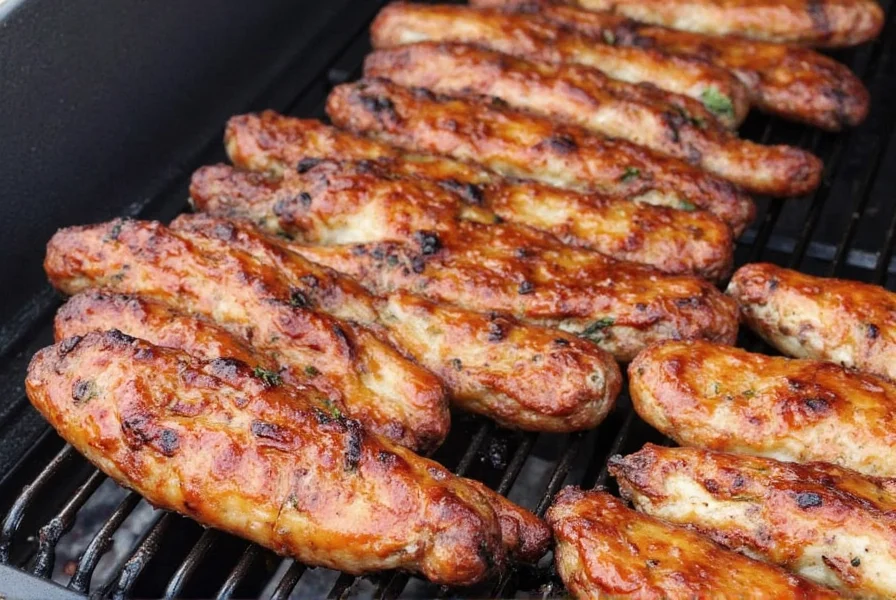To use barbecue seasoning effectively and achieve smoky, savory flavor mastery, follow these expert steps. Whether you're a beginner or seasoned grill master, understanding how to apply seasoning properly transforms your barbecue from ordinary to extraordinary.
Barbecue seasoning is more than just sprinkling spices on meat—it's a science of flavor development. The right technique ensures even coverage, optimal penetration, and that perfect crusty bark everyone craves.
7 Must-Know Tips for Using BBQ Seasoning Like a Pro
- Measure Precisely: Use 1-2 tablespoons of dry rub per pound of meat. For larger cuts like brisket or pork shoulder, increase to 1.5 tablespoons per pound for better crust formation.
- Apply Before Cooking: Season meat at least 30 minutes before grilling. For deeper flavor penetration, refrigerate seasoned meat for 12-24 hours (avoid sugar-heavy rubs for extended periods to prevent curing).
- Press and Coat Evenly: Gently press seasoning into the meat's surface using your hands. Ensure complete coverage without clumping. For ribs, coat all sides including the bone side.
- Layer for Complexity: Apply a second light layer halfway through cooking or brush with sauce in the final 30 minutes. This builds flavor depth without burning the seasoning.
- Adapt to Protein Type: Use sweeter rubs for pork ribs, spicy blends for chicken wings, and smoky profiles for beef brisket. Adjust cayenne or chili powder based on your audience's spice tolerance.
- Use Beyond Meat: Try seasoning on roasted vegetables (cauliflower, sweet potatoes), tofu, or even popcorn for a smoky kick. For plant-based proteins, press seasoning into surfaces before cooking.
- Check Sodium Content: Many commercial rubs contain high salt levels. Always taste before adding extra salt to avoid over-seasoning.
| Feature | Dry Rub | Marinade |
|---|---|---|
| Texture | Dry, powdered spices | Liquid-based (oil, acid, herbs) |
| Function | Seasons surface and forms bark | Tenderizes and infuses flavor |
| Best For | Grilled meats, ribs, chicken | Steaks, kebabs, tougher cuts |
| Time Needed | 30 mins to 24 hours | Several hours to overnight |
| Flavor Result | Crunchy crust, bold surface flavor | Mild, deep flavor throughout meat |

Buying Guide: Choosing the Best Barbecue Seasoning
With so many options, focus on these key factors:
- Natural Ingredients: Avoid fillers like corn starch or artificial flavors. Look for simple spice blends.
- Regional Profiles: Want authentic Texas flavor? Choose rubs with cumin and chili. For Carolina-style, seek apple cider vinegar notes.
- Usage Flexibility: Versatile rubs work across multiple proteins—ideal for home cooks who grill various meats.
- Packaging Size: Buy smaller containers if you grill infrequently to maintain freshness.
Top-Rated Products for Specific Needs
| Product Name | Features | Best For |
|---|---|---|
| Stubb's Original Bar-B-Q Rub | Handcrafted blend with brown sugar, paprika, garlic | All-purpose use, ribs, chicken |
| McCormick Grill Mates Smoky Mesquite | Smoky, woody flavor with mesquite undertones | Beef, burgers, grilled veggies |
| Oklahoma Joe's Cowtown Rub | Sweet base with a spicy finish | Brisket, pork shoulder, smoked meats |
| The Slap Rub – Bold & Spicy | High heat level with cumin and chili | Tacos, grilled shrimp, spicy ribs |
| Big Poppa Smokers Honey Habanero Rub | Sweet with habanero kick | Chicken wings, pulled pork, glazes |
How long should I leave dry rub on meat before cooking?
Apply dry rub at least 30 minutes before cooking for surface flavor. For deeper penetration, refrigerate for 12-24 hours (especially for larger cuts). Avoid extended marinating with sugar-heavy rubs to prevent curing.
Can I use barbecue seasoning as a marinade?
Yes—mix 2-3 tablespoons seasoning with 1/4 cup oil or vinegar to create a paste. This enhances adhesion but won't tenderize like acidic marinades. Best for already tender cuts like chicken breast or pork chops.
What's the difference between a dry rub and barbecue seasoning?
Barbecue seasoning refers to the spice blend itself, while dry rub is the application method. All dry rubs use seasoning, but not all seasonings are designed for dry rub use. Look for blends with balanced salt, sugar, and spices for optimal crust formation.
How much seasoning should I use per pound of meat?
Use 1 tablespoon per pound for standard cuts. For larger meats like brisket (10+ lbs), increase to 1.5 tablespoons per pound to ensure sufficient crust coverage. Always press seasoning into the meat for better adhesion.
Can I make my own barbecue seasoning at home?
Absolutely. A basic recipe: 1/4 cup paprika, 2 tbsp brown sugar, 1 tbsp each garlic powder, onion powder, black pepper, 1-2 tsp salt, and optional cayenne. Mix thoroughly and store in an airtight container. Adjust ratios for sweet, spicy, or smoky profiles.
How should I store barbecue seasoning?
Store in airtight containers away from heat, light, and moisture. A cool, dark pantry is ideal. Most dry rubs stay potent for 6-12 months. Replace when aroma fades or color dulls.
Can I use barbecue seasoning on vegetarian dishes?
Yes! It works wonderfully on grilled portobello mushrooms, cauliflower steaks, roasted sweet potatoes, or even popcorn. For tofu or tempeh, press seasoning into surfaces before pan-frying for maximum flavor absorption.
Barbecue seasoning mastery isn't about complicated techniques—it's about understanding how each element contributes to flavor. With precise application, proper timing, and the right blend for your protein, you'll consistently create mouthwatering results that turn every cookout into a celebration.












 浙公网安备
33010002000092号
浙公网安备
33010002000092号 浙B2-20120091-4
浙B2-20120091-4